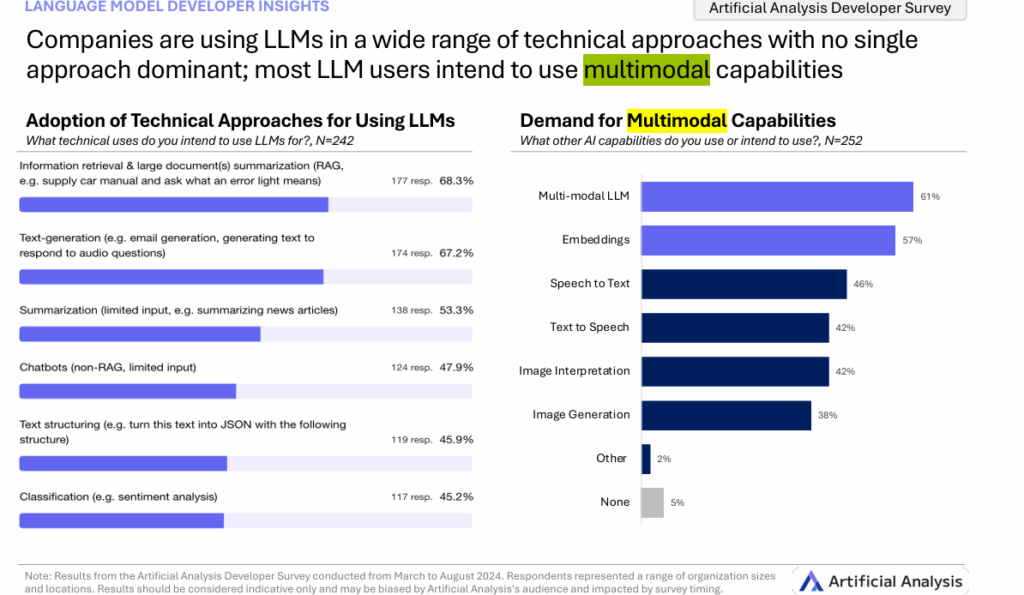What is Multimodal AI? A Comprehensive Guide to the Future of AI Models
Introduction: Unlocking the Power of Multimodal AI
Multimodal AI is revolutionizing the artificial intelligence landscape by enabling models to integrate and process multiple forms of data, such as text, images, audio, and video. Unlike traditional AI, which focuses on a single modality, multimodal AI provides a holistic view by combining different data types to enhance accuracy, context, and decision-making.
This article explores the fundamentals of multimodal AI, how it works, its applications, challenges, and the latest trends shaping its evolution.

What is Multimodal AI?
Definition and Importance
Multimodal AI refers to machine learning models capable of analyzing and integrating data from various modalities. By processing diverse inputs, these models generate comprehensive insights, bridging gaps between different types of data.
For example, multimodal AI can analyze an image, identify its context, and produce a detailed text description—or even generate a related video. This makes multimodal models invaluable in fields like healthcare, autonomous vehicles, and content creation.
Key Example:
OpenAI’s GPT-4o is a prime example of a multimodal model, combining text, image, and video inputs to deliver highly interactive and human-like responses.
How Does Multimodal AI Work?
Multimodal AI leverages advanced architectures and fusion strategies to integrate different data types seamlessly. Here’s how it works:
Core Components of Multimodal Models
- Encoders: Transform raw data (e.g., pixels, text) into machine-readable embeddings.
- CNNs: For image encoding.
- Transformers: For text encoding.
- Fusion Mechanisms: Combine embeddings from different modalities.
- Early Fusion: Merges modalities at the input stage.
- Late Fusion: Processes modalities separately and combines outputs.
- Hybrid Fusion: Integrates modalities at multiple stages.
- Decoders: Process the fused embeddings to generate outputs, such as text summaries or image classifications.
Fusion Techniques in Action
- Attention Mechanisms: Align text prompts with image features for more accurate outputs.
- Concatenation & Dot-Product: Combine embeddings for deeper cross-modal understanding.
Applications of Multimodal AI
Multimodal AI’s versatility has unlocked transformative applications across various industries:
- Healthcare:
- Analyze X-rays and patient records simultaneously to enhance diagnosis accuracy.
- Assist in visual question-answering (VQA) for medical imaging.
- Autonomous Vehicles:
- Integrate camera, LIDAR, and GPS data for real-time decision-making.
- Content Creation:
- Use generative models like DALL-E and Gen-2 to produce high-quality visuals and videos.
- Education:
- Develop interactive tools for students, such as visual aids for complex concepts.
- E-Commerce:
- Implement chatbots like LLaVA to offer personalized shopping recommendations based on images and queries.
Trends in Multimodal AI (2024)
Multimodal AI is rapidly evolving, with the following trends shaping its trajectory:
- Unified Models:
- OpenAI’s GPT-4o and Google’s Gemini integrate diverse modalities into a single architecture, streamlining performance.
- Real-Time Processing:
- Essential for applications like augmented reality and autonomous driving.
- Data Augmentation:
- Combining synthetic data (e.g., text-image pairs) to improve model training.
- Open Source Collaboration:
- Platforms like Hugging Face foster innovation by providing tools and datasets for developers.
- Enhanced Cross-Modal Interaction:
- Using transformers to align text, images, and video for more coherent outputs.
Challenges in Multimodal AI
Despite its potential, multimodal AI faces significant challenges:
- Data Availability and Annotation:
- High-quality, labeled multimodal datasets are scarce and costly to produce.
- Solution: Utilize automated labeling tools and few-shot learning.
- Model Complexity:
- Integrating multiple modalities increases computational demands.
- Solution: Apply techniques like quantization and knowledge distillation.
- Noise and Ambiguity:
- Differing data quality across modalities can reduce model reliability.
- Solution: Focus on robust data preprocessing and filtering.
Key Multimodal Models to Watch in 2024
- GPT-4o:
- Multilingual capabilities and fast response times make it ideal for interactive tasks.
- Gemini:
- Offers specialized variants (Ultra, Pro, Nano) for diverse applications, from coding to virtual assistants.
especially the new gemini 2.0 is one of the most interesting multimodal ai models out there.
- DALL-E:
- Excels in text-to-image generation and creative visualizations.
- LLaVA:
- Builds sophisticated chatbots for e-commerce and education.
- ImageBind:
- Integrates up to six modalities, including thermal and depth data, for complex tasks.
Future Outlook
Multimodal AI is poised to revolutionize human-computer interactions, creating more natural, intuitive experiences. Its integration into industries like healthcare, education, and content creation will continue to expand, driven by innovations in training methods, data collection, and explainable AI.
As this field grows, businesses must stay ahead by adopting these technologies to remain competitive in an increasingly AI-driven world.
Conclusion
The future of AI is multimodal. By combining the strengths of different data types, multimodal AI unlocks possibilities that were once unimaginable. Whether you’re in healthcare, e-commerce, or creative industries, embracing multimodal AI can transform your operations and drive innovation.
What are your thoughts on this exciting technology? Share your ideas in the comments below!










